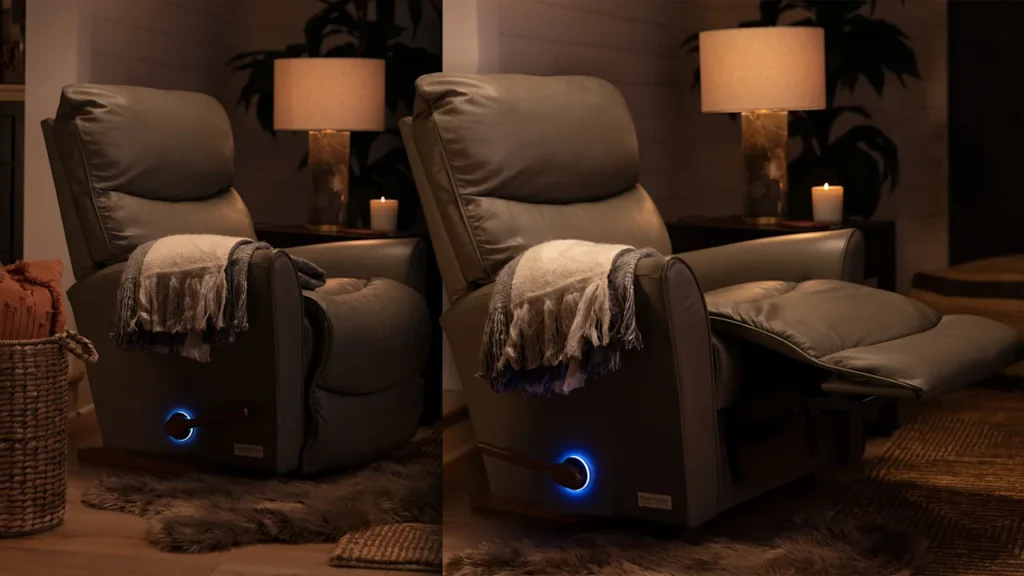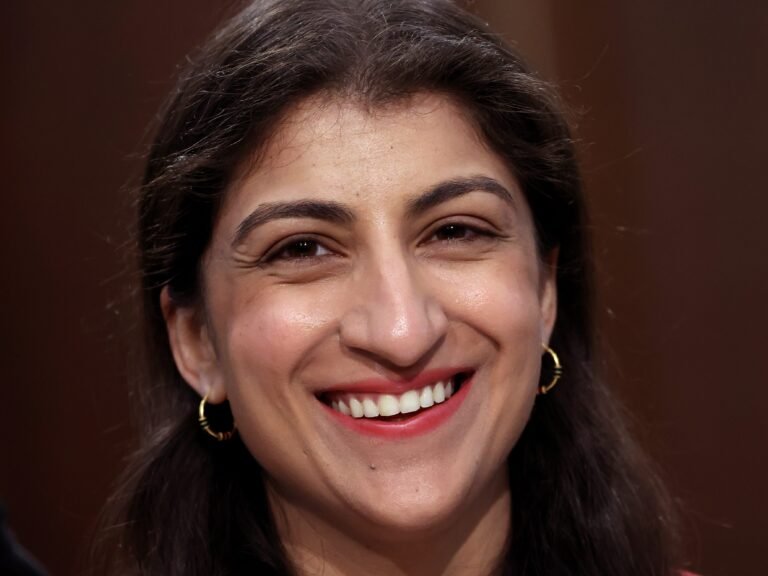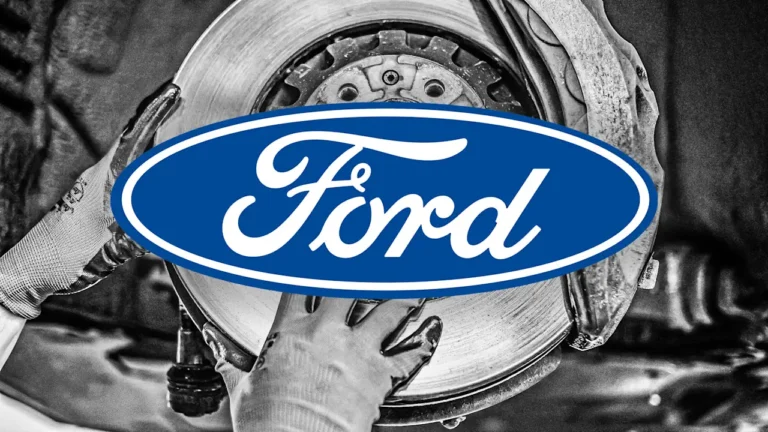
Nearly everyone in America recognizes the brand name La-Z-Boy, and most will remember it fondly as part of their childhoods. Far fewer see it as a brand they would actually buy today, but La-Z-Boy is on a mission to change that.
The company is unveiling its first rebrand in 20-plus years to position itself as more than just your grandma’s recliner. The brand has traded its minimalist, sans-serif logo for a retro script wordmark. It revamped its color palette and adopted a whole new brand voice that emphasizes coziness and comfort rather than just function. La-Z-Boy requested that Fast Company refer to these changes as a “brand refresh” (a term typically used as a safer, less extreme alternative to “rebrand”), but the sum of these swaps equals a full visual overhaul.
The new look is part of La-Z-Boy’s “Century Vision” strategy: a business plan intended to prepare the brand for growth after its 2027 centennial anniversary.
Christina Hoskins, the company’s chief marketing officer, says the key to jump-starting that upward trajectory is to make sure that La-Z-Boy is not a brand that exists only in people’s memories. “We started to suspect that we are a brand that’s on the verge of fading into history, and we didn’t want that to be the case,” Hoskins says.

The new La-Z-Boy
La-Z-Boy is contending with a housing and furniture market battered by consumer concerns around inflation, the rising cost of living, and the economic whiplash of President Trump’s tariffs. According to its fiscal year 2025 financial report, La-Z-Boy notched $2.1 billion in sales—up 3% from the previous fiscal year but down from its 2022 high of $2.4 billion. As of this writing, the brand’s stock is also down nearly 10% compared to this time last year.
Hoskins says that to set itself up for the future, La-Z-Boy has been working on expanding its retail network. This year, it built 12 new locations and acquired seven independently owned stores—one of the largest annual expansions in company history.
Originally, the goal of the refresh was to widen the company’s consumer base alongside its retail presence by attracting a younger audience. However, as Hoskins and her team worked with partners at the branding agency Colle McVoy, they realized they needed to zoom out even further.
After analyzing their existing branding and consumer feedback, they found that La-Z-Boy’s marketing focus was specific to the functionality of its furniture, whereas target consumers across generations cared more about the feelings the brand could evoke.
“There is a [target] consumer out there who wants comfort first, who wants a home they can live in, who wants peace over perfection in life,” Hoskins says. “The beauty of that is that we’re able to go in through this more emotional angle and tap into people’s values and beliefs, and then reach a broad consumer set. The outcome of that will be that we’re reaching younger consumers, but we’re not just chasing after the age alone.”
Over the past couple of years, La-Z-Boy has already begun quietly rolling out a more consumer-focused, playful voice via new brand activations. In 2023, the company debuted a national advertising campaign called “Long Live the Lazy,” which called on fans to reclaim so-called laziness and embrace “JOMO” (“the joy of missing out”).
It also unveiled “The Decliner,” an AI-powered prototype chair that helped the reclinee draft text messages to cancel their plans. On opening weekend, the Decliner drove a 50% increase in sales and a 200% increase in web traffic.

In 2024, the company followed up with “Decline to Recline,” an ad campaign poking fun at people who recline their seats on airplanes (and nudging offending passengers to use a La-Z-Boy at home instead). An accompanying petition to end airplane recliners, which La-Z-Boy published on its website, received more than 400,000 signatures.
Through these campaigns, Hoskins says, La-Z-Boy showed up differently in the cultural zeitgeist than it ever had before, which “opened people’s eyes to the new La-Z-Boy.”
From corporate to cozy
Once the La-Z-Boy team identified this strategy, there was another issue: The “new La-Z-Boy”—intended to encapsulate comfort, warmth, and a stress-free space—was deeply detached from how the branding actually looked.
“We did a fair amount of consumer research that showed it felt sterile, it felt cold, it felt corporate, and it didn’t match the experience of sitting in a La-Z-Boy chair,” Hoskins says.
La-Z-Boy’s then-logo, first introduced in 2003, featured a thin sans-serif wordmark with a small pop of icy blue. Diana Quenomoen, design director at Colle McVoy, says the wordmark felt like something you might find in a healthcare or tech field, not a piece of furniture you’d want to sink into.
Quenomoen’s team turned to La-Z-Boy’s 1927 script logo for inspiration. They drew a new version of the mark, character by character, that takes some cues from the original—like the connective flourishes and the Z appearing to be cradled between the other characters—while also putting a modern spin on the script concept.
Another core inspiration was the furniture itself, which shows in the plumpness of the letters and the wordmark’s italicized setting, meant to mimic a chair’s recline.
“From the beginning, one of our team members pointed to this logo and said, ‘I want to [lie] on that,’” Hoskins says. “We were like, ‘Oh, we’re hitting on something here.’”
The new identity also includes a warmer palette of burnt vermilion and soft celadon green, a custom monogram featuring the script letters LZB, and a wave-like color-blocked pattern. All of Colle McVoy’s work was collected in a new internal style guide that’s meant to help La-Z-Boy maintain brand consistency as it works to expand its network of company-owned stores.
The rebrand will begin rolling out digitally and via advertising channels on July 29. Physical storefronts will be updated over the next few years.
“It’s really exciting to see how we’ve captured what the brand is through the identity, and how that can inspire new thinking about shopper experiences,” Hoskins says.


